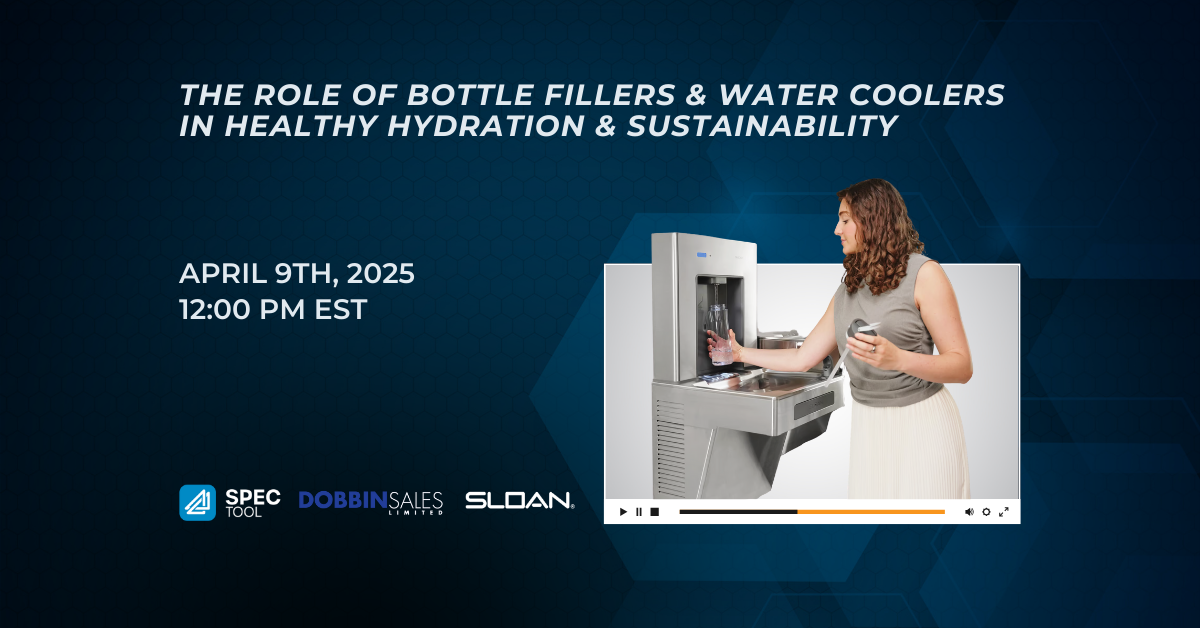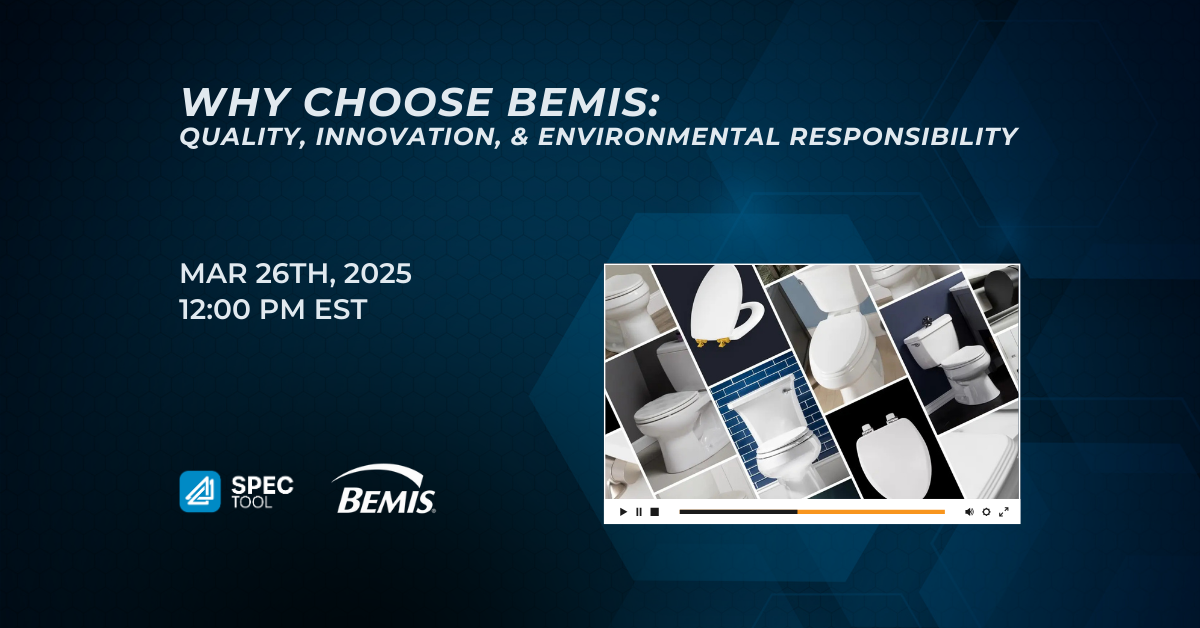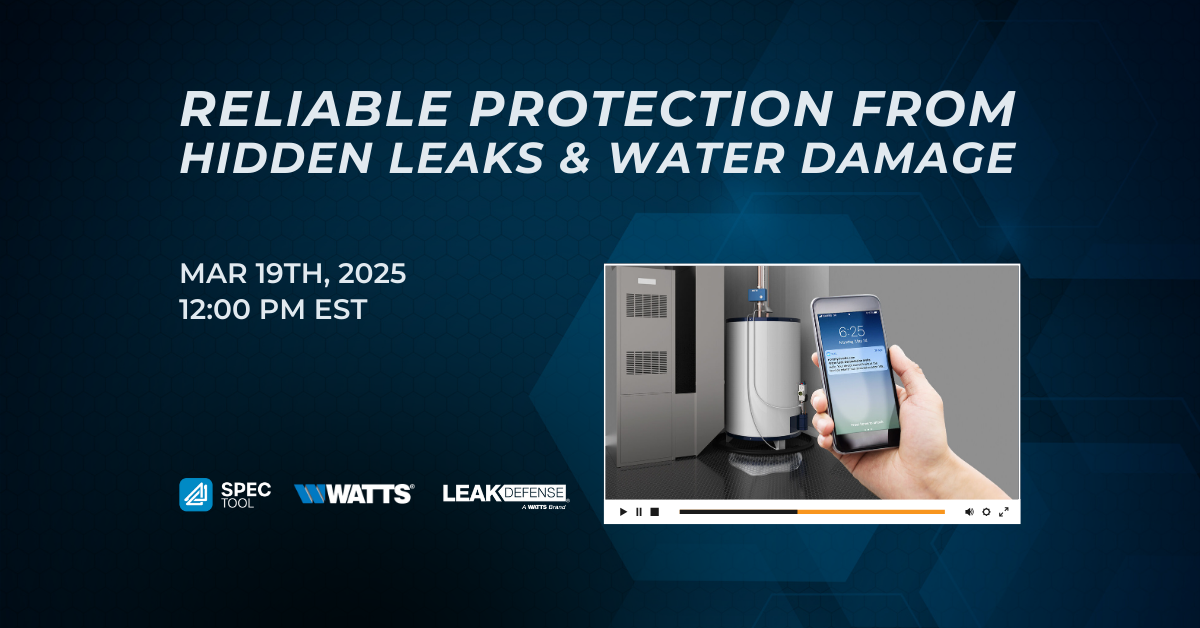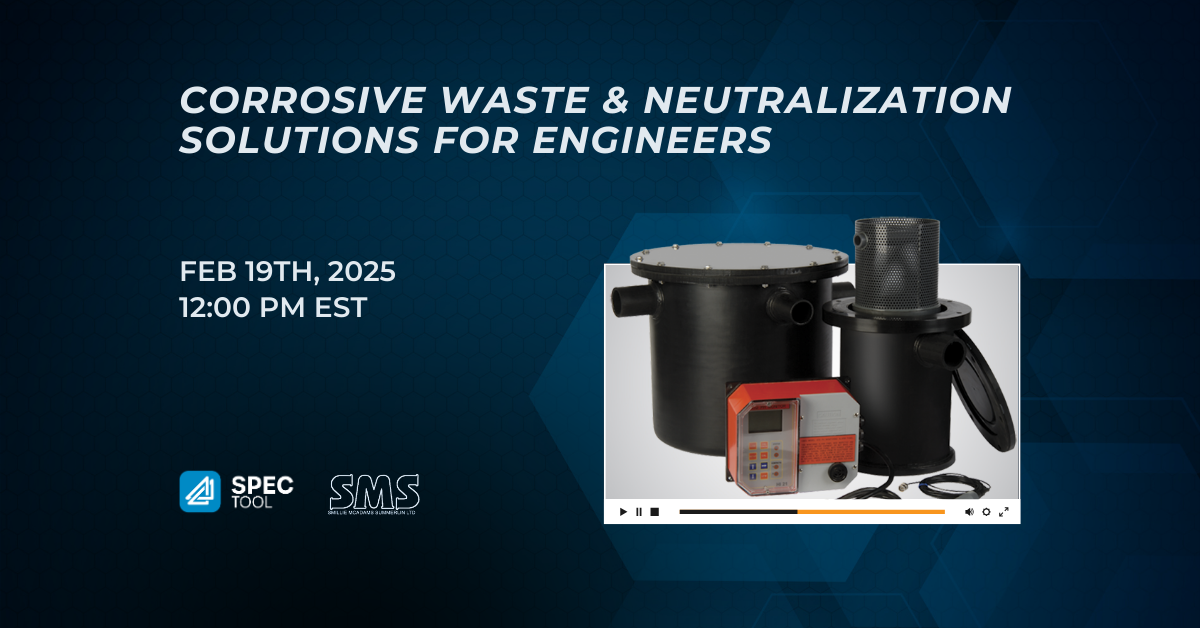The Role of Bottle Fillers & Water Coolers in Healthy Hydration & Sustainability

Webinar Summary: Chapters and Key Takeaways
Chapter 1:
Introduction to Bottle Fillers and Water Coolers
- Overview of water coolers and bottle fillers as modern hydration solutions in commercial and institutional buildings. Bottle fillers can replace or be combined with water coolers, offering a hygienic and sustainable hydration experience.
- Learning objectives include understanding the role of these products in healthy hydration, sustainability, and design considerations such as ADA compliance and safety standards.
Key Takeaways:
- Bottle fillers support hygienic hydration and reduce the reliance on bottled water.
- The session covers ADA standards and other important building codes when specifying these systems.
- Combining bottle fillers with water coolers enhances operation and sustainability efforts in buildings.
Chapter 2:
Healthy Hydration and Water Quality
- Discussion on the WELL Building Standards under the Water Concept, which promote safe and clean water through proper filtration and regular testing.
- Encouraging hydration by ensuring water is accessible, clear, and good-tasting, reducing the reliance on bottled water.
Key Takeaways:
- Proper filtration and regular quality testing are crucial for optimal water quality.
- Easy access to clean, good-tasting water promotes increased consumption and prevents mild dehydration.
- A focus on reducing bottled water reliance aligns with sustainable building goals.
Chapter 3:
Design and Accessibility Features
- Bottle fillers are designed for ease of operation, maintenance, and environmentally sustainable upgrades . They should also align with ADA requirements to ensure barrier-free hydration options for all.
- Manufacturers aim to simplify retrofitting with minimal wall disruption, further encouraging their adoption.
Key Takeaways:
- Bottle fillers are innovative, easy to maintain, and adaptable to existing infrastructure.
- ADA compliance ensures inclusivity and accessibility in design.
- Retrofit installation minimizes construction and encourages widespread implementation.
Chapter 4:
Regulations, Codes, and Safety Standards
- Importance of understanding codes like NSF-61 for safe water consumption and point-of-use filtration.
- Safety standards ensure that water coolers and bottle fillers meet minimum health effects requirements for chemical safety.
Key Takeaways:
- Compliance with NSF-61 ensures the safe consumption of water from these systems.
- Point-of-use filtration enhances safety by eliminating impurities at the dispensing point.
- Adhering to codes and standards is critical for accountability and public health.
Chapter 5:
Applications in Outdoor and Commercial Spaces
- Bottle fillers are increasingly integrated into outdoor environments like parks, trails, and sports fields, meeting hydration needs in various settings.
- Their role in providing accessible, sustainable hydration in schools, workplaces, and public areas is emphasized.
Key Takeaways:
- Bottle fillers ensure hydration accessibility in diverse settings, from schools to outdoor parks.
- They are part of a broader shift toward healthier and more sustainable designs in public and commercial infrastructure.
- Outdoor-rated products expand the versatility of these hydration solutions.



